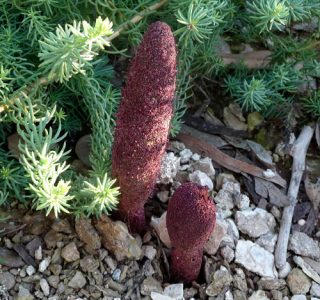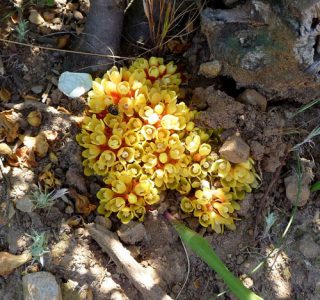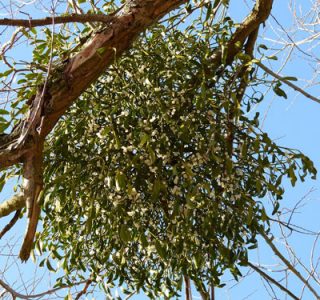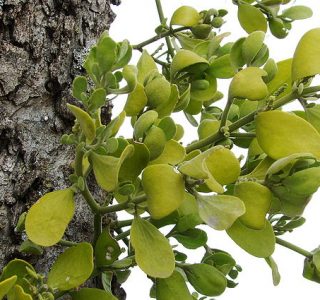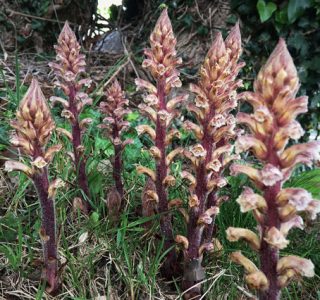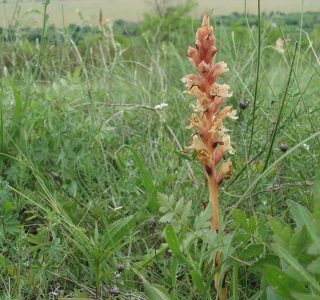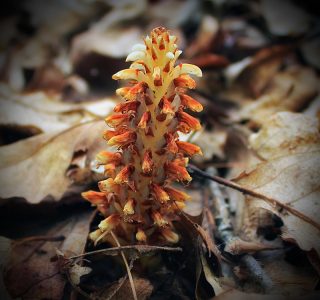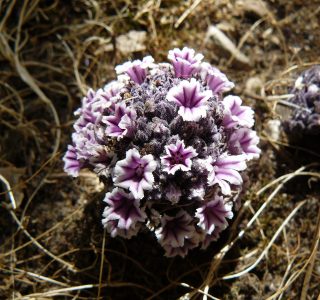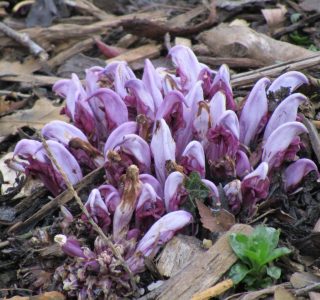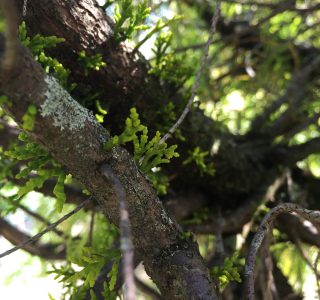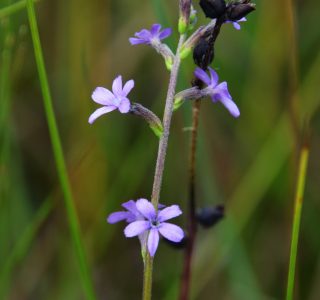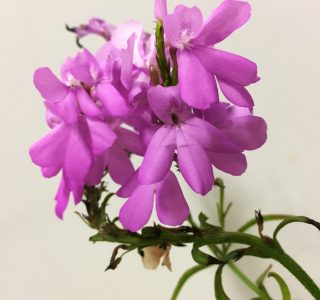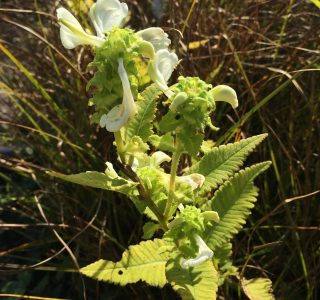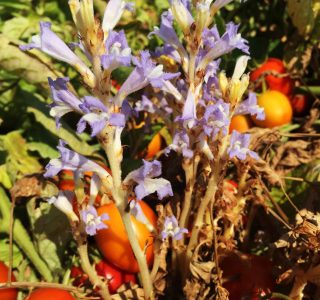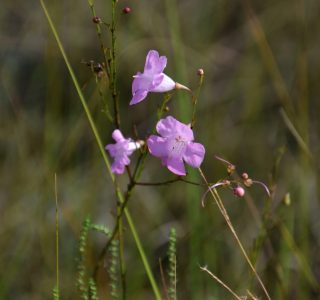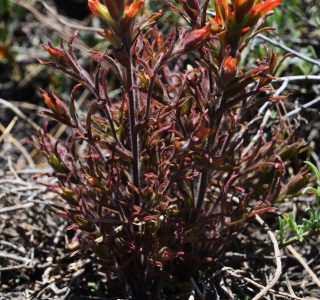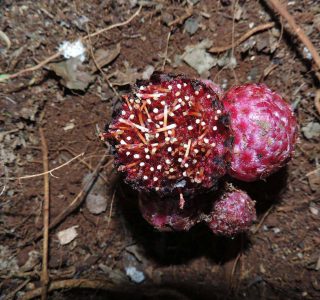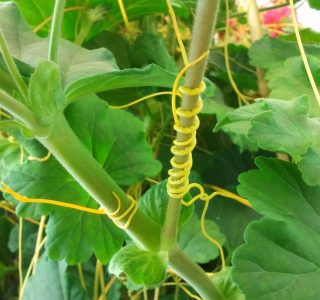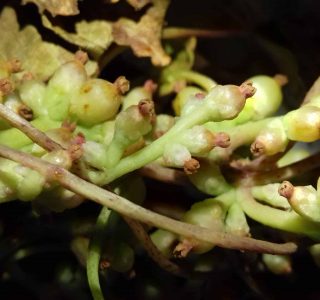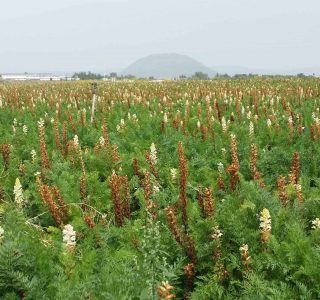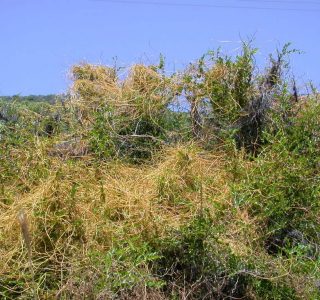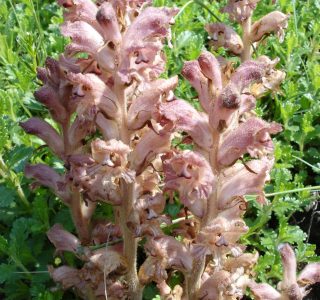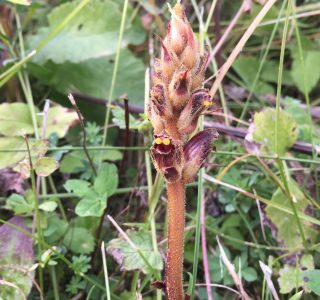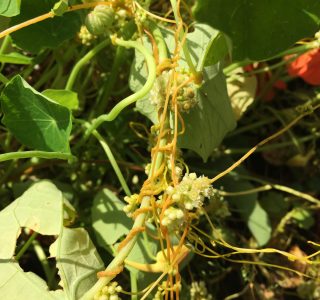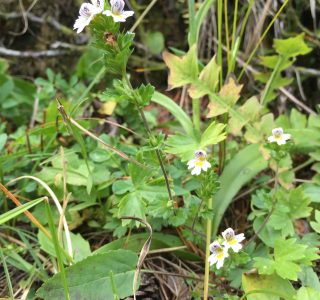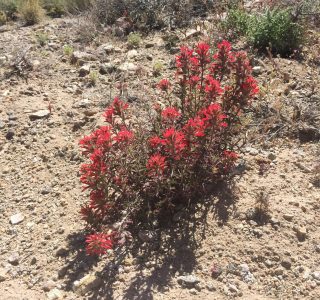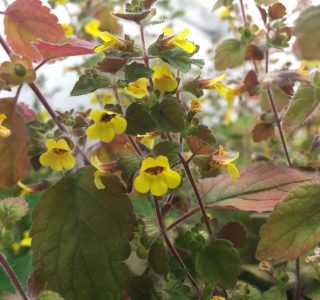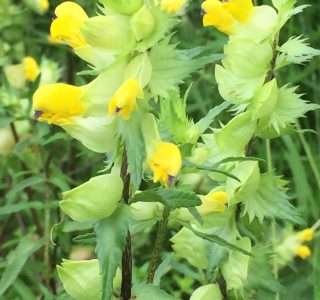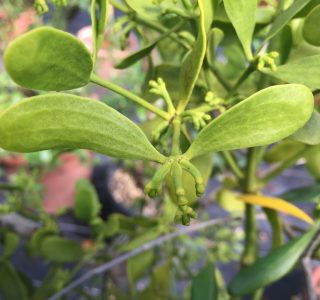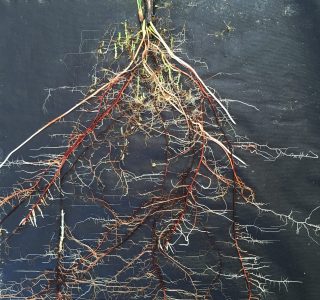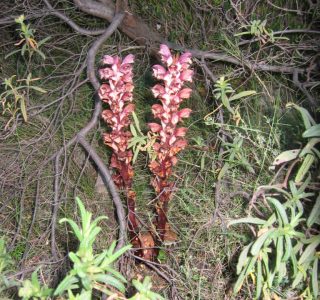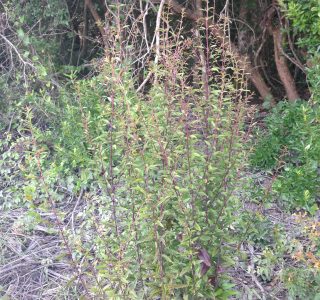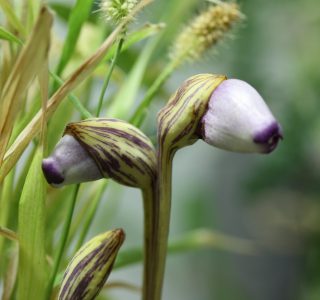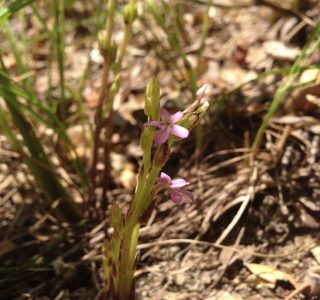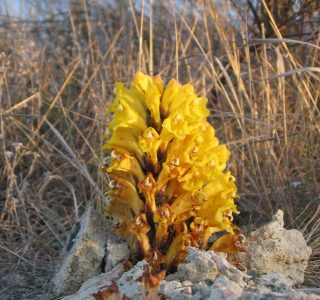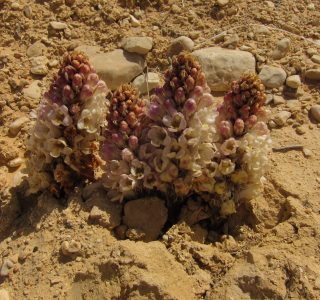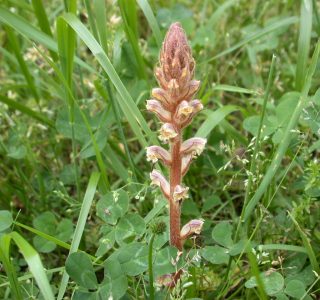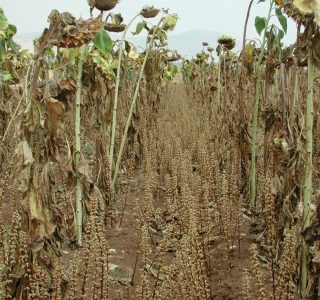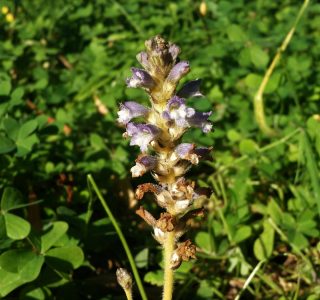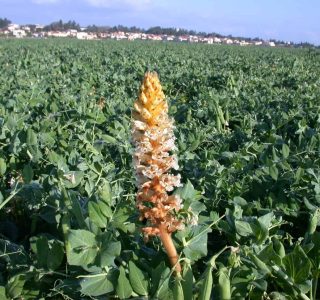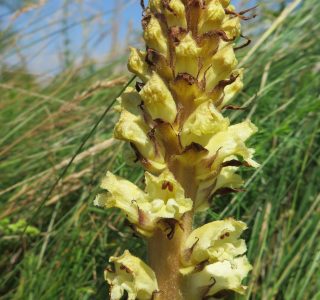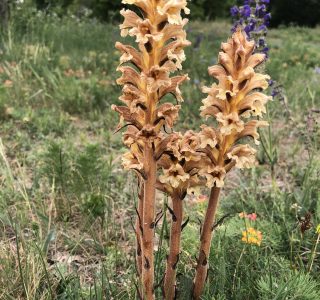
International Parasitic Plant Society
Welcome to the homepage of the International Parasitic Plant Society (IPPS). The IPPS is dedicated to advancing scientific research on parasitic plants. Our goals include increasing the understanding of these amazing plants, providing a platform for exchange among and beyond the scientific community as well as helping to decrease the crop damage inflicted by weedy parasitic plants.
Latest News
- Researchers Identify Microbes That Help Plants Thwart Parasite
- New paper: Host interactions, pathology, economic impacts and management of the facultative parasitic weed Rhamphicarpa fistulosa
- Screening tropical and sub‑tropical maize germplasm for resistance to Striga hermonthica and S. asiatica and yield‑related traits
- New paper: “Macronutrient application rescues performance of tolerant sorghum genotypes when infected by the parasitic plant striga”
- Travel grants awarded – 17th World Congress on Parasitic Plants, 3–7 June 2024, Nara, Japan, .
- IPPS Executive Committee Election 2024
Upcoming: The 17th World Congress On Parasitic Plants (WCPP): 3–7 June 2024, Nara, Japan.
For more information see the website and Society news
Member benefits
Discount
Get a member discount for our biennial congress
Meet
Entry in and access to the member’s directory
Inform & get informed
Have access to IPPS seminars; post news on parasitic plants
Meet our talent
Post vacancies for jobs in parasitic plant research
A picture tells
Non-commercial usage rights of the photo gallery
Most recent ‘Parasitic Plant’ publications
on the Web
Evaluation of Western Ethiopian Sorghum Landraces for Resistance to Striga hermonthica (Del.) Benth
MK Earecho, E Nebiyu - 2024 - researchsquare.com
Tuesday 23 April 2024
Striga resistant or tolerant sorghum would form a great part of an integrated
Striga to the effects of Striga parasitism. Early maturing sorghum landraces have the lowest
domain : www.researchsquare.com
Cereal production in Africa: the threat of certain pests and weeds in a changing climate—a review
J Benjamin, O Idowu, OK Babalola, EV Oziegbe… - Agriculture & Food …, 2024 - Springer
Sunday 21 April 2024
Parasitic plants such as mistletoe, dodder, and witchweed attach themselves
to host plants and tap into their vascular systems to obtain nutrients, further impacting the host
domain : link.springer.com
versions : 3
Genetic potential and inheritance pattern of agronomic traits in faba bean under free and infested Orobanche soil conditions
AA Soliman, MA Ibrahim, MI Mousa… - BMC Plant …, 2024 - bmcplantbiol.biomedcentral.com
Saturday 20 April 2024
Orobanche is an obligate parasite on faba bean in the Breeding tolerant
faba bean genotypes to Orobanche is were evaluated under Orobanche free and naturally
domain : bmcplantbiol.biomedcentral.com
versions : 2
МАТЕРИАЛЫ ПУЛА НАУЧНО-ПРАКТИЧЕСКИХ КОНФЕРЕНЦИЙ
НД УШАКОВА, ТВ СВИСТУН, НИ КОНОПЛЯ - elibrary.ru
Friday 19 April 2024
.
domain : elibrary.ru
Evaluation of granular formulated strigolactone analogs for Striga suicidal germination
M Jamil, O Margueritte, D Yonli, JY Wang… - Pest management … - pubmed.ncbi.nlm.nih.gov
Thursday 18 April 2024
The dependency of Striga seed Striga seed germination at a rate of up to
43%. With 10 mg granular product (0.75 mg ai) per pot, we observed 77-83% reduction in Striga
domain : pubmed.ncbi.nlm.nih.gov
Parasitic dodder expresses an arsenal of secreted cellulases with multi-substrate specificity during host invasion
H Edema, T Bawin, S Olsen, K Krause… - Plant Physiology and …, 2024 - Elsevier
Thursday 18 April 2024
Cuscuta campestris is a common and problematic parasitic plant which relies
on haustoria to connect to and siphon nutrients from host plants. Glycoside hydrolase family
domain : www.sciencedirect.com
Global changes in gene expression during compatible and incompatible interactions of faba bean (Vicia faba L.) during Orobanche foetida parasitism
A Boukteb, K Sato, P Gan, M Kharrat, H Sakouhi… - PLOS …, 2024 - journals.plos.org
Wednesday 17 April 2024
Indeed, in heavily infested fields with this parasitic plant, yield losses may reach
90% -parasitic plant interactions. Furthermore, considering the pivotal role of parasitic plant
domain : journals.plos.org
Response of Wheat and Faba Bean to Intercropping and Tillage System on a Mediterranean Rainfed Vertisol
RJ Lopez-Bellido, V Muñoz-Romero… - Agricultural …, 2024 - Springer
Wednesday 17 April 2024
Glyphosate was applied to the faba bean plots at a rate of 0.065 L active
ingredient ha 1 as a postemergence spray when the broomrape (Orobanche crenata Forsk) was
domain : link.springer.com
ENINGKATAN PENGETAHUAN PETANI ANGGOTA GAPOKTANHUT JAYA MAKMUR DESA CILIMUS, PROVINSI LAMPUNG TENTANG PEMELIHARAAN POHON
I INDRIYANTO, S SURNAYANTI… - COMMUNITY: Jurnal …, 2024 - jurnalp4i.com
Tuesday 16 April 2024
Increased by 12.2 value, farmers' knowledge about how to control pests and
diseases increased by 13.0 value, and farmers' knowledge of how to control parasitic plants
domain : jurnalp4i.com
versions : 2
A cluster of putative resistance genes is associated with a dominant resistance to sunflower broomrape
C Pubert, MC Boniface, A Legendre… - Theoretical and Applied …, 2024 - Springer
Sunday 14 April 2024
Parasitic plant that is part of the Orobanchaceae family and specifically infests
sunflower crops. This weed is an obligate parasitic plant essential for parasitic plant survival
domain : link.springer.com
mental health journey:-UNTOLD STORIES OF PEOPLE FROM THE NORTHEAST OF INDIA
B Meitei - 2024 - policycommons.net
Sunday 14 April 2024
Questions surfaced Queerness, for Antarleena, is the zeal to and re-surfaced,
doubts grew outside of her explore the unexplored, to re-imagine, and to like parasitic plants,
domain : policycommons.net
versions : 2
HIGH-YIELDING STRIGA RESISTANT MAIZE (ZEA MAYS L.) HYBRIDS: A
MI Jatto, AS Juraimi, MY Rafii, MH Nazli, Y Oladosun… - plantarchives.org
Saturday 13 April 2024
Striga emergence count with maize agronomic traits whereas, Striga count was
negatively correlated with Striga susceptibility of Striga is determined by Striga counts and
domain : www.plantarchives.org
Spotlight Article
TGL Kovacs, J Walker, S Hellemans, T Bourguignon… - 2024 - researchgate.net
Friday 12 April 2024
Rates of nucleotide substitution vary substantially across the Tree of Life, with
potentially confounding effects on phylogenetic and evolutionary analyses. A large
domain : www.researchgate.net
icroevolution toward loss of photosynthesis: Mutations promoting dark-heterotrophic growth and suppressing photosynthetic growth in cyanobacteria
S Hida, M Nishio, K Uesaka, M Banba, N Takatani… - bioRxiv, 2024 - biorxiv.org
Friday 12 April 2024
The prevalence of parasitic plants suggests frequent evolution of photosynthetic
capacity loss in the natural environment. However, no studies have observed such
domain : www.biorxiv.org
Cytotoxic potential and phytochemical profiling of Scurrula atropurpurea (Bl.) dans extracts on T47D cell line
S Wahyono, S Haryanti, R Mujahid… - AIP Conference …, 2024 - pubs.aip.org
Wednesday 10 April 2024
An anticancer agents, are typically found in parasitic plants. Several species of
parasites, The parasitic plant species Scurrula atropurpurea (Bl.) Dans, dendrophthoe, and
domain : pubs.aip.org
Most recent 'Parasitic Plant' publications
in Scopus
- Genetic potential and inheritance pattern of agronomic traits in faba bean under free and infested Orobanche soil conditions Alaa A. Soliman, Mohamed A. Ibrahim, Manar I. Mousa, Elsayed Mansour, Yuhua He, Haitian Yu BMC Plant Biology, volume 24 Thursday 25 April 2024 Background: Orobanche is an obligate parasite on faba bean in the Mediterranean region, causes considerable yield losses. Breeding tolerant faba bean genotypes to Orobanche is pivotal to sustain production and ensuring global food security, particularly considering the challenges posed by population growth. In the present study, seven faba bean lin... Background: Orobanche is an obligate parasite on faba bean in the Mediterranean region, causes considerable yield losses. Breeding tolerant faba bean genotypes to Orobanche is pivotal to sustain production and ensuring global food security, particularly considering the challenges posed by population growth. In the present study, seven faba bean lines and four testers were used in a line×tester mating design during 2020–2021 and 2021–2022 growing seasons. The eleven parents and their 28 F1 crosses were evaluated under Orobanche free and naturally infested soils. Results: The results demonstrated considerable variations among the evaluated genotypes, wide diversity among the parental materials, and heterotic effects for all studied agronomic traits under Orobanche-free and infested soils. Orbanche infestation displayed a significant adverse impact on all the studied agronomic traits. The genotypes Line1, Line2, Line3, and Line5 displayed superior performance under Orobanche-infested conditions and recorded the highest values of all studied agronomic traits. Additionally, Line1, Line2, Line3, Line5, and Line7 exhibited desirable significant GCA for most evaluated traits under the two infestation conditions. The obtained crosses displayed significant negative or positive heterosis for studied agronomic characters such as plant height, number of branches per plant, number of pods per plant, number of seeds per plant, and seed weight per plant were observed. Furthermore, specific cross combinations such as Line2×Sakha3, Line3×Nubaria5, Line7 × Nubaria5, Line6×Nubaria1, Line5×Sakha3, Line1×Sakha3, and Line1 × Nubaria5 exhibited superior performance in seed yield and contributing traits under Orobanche-infested conditions. Moreover, these specific crosses showed superior efficacy in reducing dry weight of Orobanche spikes. The results obtained from GGE biplot analysis closely aligned with those from the line×tester procedure, affirming the significance of GGE biplot as a valuable statistical tool for assessing genotype combining ability in line× tester data. Both additive and non-additive gene actions were reported to be predominantly involved in the inheritance of the studied agronomic traits in faba bean. Conclusions: The detected genetic diversity within the evaluated faba bean genotypes and their developed crosses exhibits substantial potential for improving faba bean productivity under Orobanche-infested conditions. The parental genotypes, Line1, Line2, Line3, Line5, and Line7, were identified as effective and promising combiners. Moreover, the developed crosses Line2×Sakha3, Line3×Nubaria5, Line7×Nubaria5, Line6×Nubaria1, Line5×Sakha3, Line1×Sakha3, and Line1×Nubaria5 could be considered valuable candidates for developing high-yielding and tolerant faba bean genotypes to Orobanche.
- The soil microbiome modulates the sorghum root metabolome and cellular traits with a concomitant reduction of Striga infection Dorota Kawa, Benjamin Thiombiano, Mahdere Z. Shimels, Tamera Taylor, Aimee Walmsley, Hannah E. Vahldick, Dominika Rybka, Marcio F.A. Leite, Zayan Musa, Alexander Bucksch, Francisco Dini-Andreote, Mario Schilder, Alexander J. Chen, Jiregna Daksa, Desalegn W. Etalo, Taye Tessema, Eiko E. Kuramae, Jos M. Raaijmakers, Harro Bouwmeester, Siobhan M. Brady Cell Reports, volume 43 Thursday 25 April 2024 Sorghum bicolor is among the most important cereals globally and a staple crop for smallholder farmers in sub-Saharan Africa. Approximately 20% of sorghum yield is lost annually in Africa due to infestation with the root parasitic weed Striga hermonthica. Existing Striga management strategies are not singularly effective and integrated approaches a... Sorghum bicolor is among the most important cereals globally and a staple crop for smallholder farmers in sub-Saharan Africa. Approximately 20% of sorghum yield is lost annually in Africa due to infestation with the root parasitic weed Striga hermonthica. Existing Striga management strategies are not singularly effective and integrated approaches are needed. Here, we demonstrate the functional potential of the soil microbiome to suppress Striga infection in sorghum. We associate this suppression with microbiome-mediated induction of root endodermal suberization and aerenchyma formation and with depletion of haustorium-inducing factors, compounds required for the initial stages of Striga infection. We further identify specific bacterial taxa that trigger the observed Striga-suppressive traits. Collectively, our study describes the importance of the soil microbiome in the early stages of root infection by Striga and pinpoints mechanisms of Striga suppression. These findings open avenues to broaden the effectiveness of integrated Striga management practices.
- Global changes in gene expression during compatible and incompatible interactions of faba bean (Vicia faba L.) during Orobanche foetida parasitism Amal Boukteb, Kazuki Sato, Pamela Gan, Mohamed Kharrat, Hanen Sakouhi, Arisa Shibata, Ken Shirasu, Yasunori Ichihashi, Mariem Bouhadida PLoS ONE, volume 19 Thursday 25 April 2024 Orobanche foetida Poiret is the main constraint facing faba bean crop in Tunisia. Indeed, in heavily infested fields with this parasitic plant, yield losses may reach 90%, and the recent estimation of the infested area is around 80,000 ha. Identifying genes involved in the Vicia faba/O. foetida interaction is crucial for the development of effectiv... Orobanche foetida Poiret is the main constraint facing faba bean crop in Tunisia. Indeed, in heavily infested fields with this parasitic plant, yield losses may reach 90%, and the recent estimation of the infested area is around 80,000 ha. Identifying genes involved in the Vicia faba/O. foetida interaction is crucial for the development of effective faba bean breeding programs. However, there is currently no available information on the transcriptome of faba bean responding to O. foetida parasitism. In this study, we employed RNA sequencing to explore the global gene expression changes associated with compatible and incompatible V. faba/O. foetida interactions. In this perspective, two faba bean varieties (susceptible and resistant) were examined at the root level across three stages of O. foetida development (Before Germination (BG), After Germination (AG) and Tubercule Stage (TS)). Our analyses presented an exploration of the transcriptomic profile, including comprehensive assessments of differential gene expression and Gene Ontology (GO) enrichment analyses. Specifically, we investigated key pathways revealing the complexity of molecular responses to O. foetida attack. In this study, we detected differential gene expression of pathways associated with secondary metabolites: flavonoids, auxin, thiamine, and jasmonic acid. To enhance our understanding of the global changes in V. faba response to O. foetida, we specifically examined WRKY genes known to play a role in plant host-parasitic plant interactions. Furthermore, considering the pivotal role of parasitic plant seed germination in this interaction, we investigated genes involved in the orobanchol biosynthesis pathway. Interestingly, we detected the gene expression of VuCYP722C homolog, coding for a key enzyme involved in orobanchol biosynthesis, exclusively in the susceptible host. Clearly, this study enriches our understanding of the V. faba/O. foetida interaction, shedding light on the main differences between susceptible and resistant faba bean varieties during O. foetida infestation at the gene expression level.
- Combining ability and hybrid breeding in pearl millet (Pennisetum glaucum [L.] R. Br.) for agronomic traits and resistance to Striga hermonthica Armel Rouamba, Hussein Shimelis, Inoussa Drabo, Emmanuel Mrema, Jacob Mashilo, Learnmore Mwadzingeni Euphytica, volume 220 Saturday 20 April 2024 Pearl millet (Pennisetum glaucum [L.] R. Br., 2n = 2x = 14) is a nutrient-dense and climate-resilient crop widely cultivated in the dry regions of Africa and Asia. In Burkina Faso, the actual mean yield of the crop is < 1 ton/ha compared with a potential yield of 3 tons/ha. Several constraints, including cultivar susceptibility to the noxious wee... Pearl millet (Pennisetum glaucum [L.] R. Br., 2n = 2x = 14) is a nutrient-dense and climate-resilient crop widely cultivated in the dry regions of Africa and Asia. In Burkina Faso, the actual mean yield of the crop is < 1 ton/ha compared with a potential yield of 3 tons/ha. Several constraints, including cultivar susceptibility to the noxious weed Striga hermonthica (Del.) Bentham (Sh) and severe and recurrent drought stress limit the potential productivity of the crop. Therefore, this study aimed to determine the combining ability effects and degree of heterosis for agronomic traits and resistance to Sh among complementary pearl millet genotypes to select promising parental lines and hybrids to develop and deploy farmer-preferred varieties. The narrow-and broad-sense heritability were relatively higher for Striga-resistance (≥ 70%) and low (≤ 23%) for grain yield. The general combining ability and specific combining ability ratios were less than unity for agronomic traits and Striga reaction indicating the predominance of non-additive gene action conditioning the assessed traits. The new experimental hybrids such as IP-11358 × ICMB177111, IP-11358 × IKMB18002, IP-10579 × ICMB177002 and IP-9242 × ICMB177002 are recommended for multi-environment evaluation and production in Sh-infested pearl millet cultivation agro-ecologies in Burkina Faso or similar agro-ecologies.
- Cuscuta chinensis flavonoids alleviate ovarian damage in offspring female mice induced by BPA exposure during pregnancy by regulating the central carbon metabolism pathway Qianhui Zhao, Ying Liu, Yanan Chuo, Xiao Wang, Yulan Jiao, Wanyu Shi, Yongzhan Bao Ecotoxicology and Environmental Safety, volume 275 Friday 19 April 2024 Pregnancy is a sensitive window period for bisphenol A (BPA) exposure. BPA can pass through the placenta and cause reproductive damage in offspring female mice. Even BPA that is not metabolized during lactation can be passed through milk. Cuscuta chinensis flavonoids (CCFs) can alleviate reproductive damage caused by BPA, but the mechanism of actio... Pregnancy is a sensitive window period for bisphenol A (BPA) exposure. BPA can pass through the placenta and cause reproductive damage in offspring female mice. Even BPA that is not metabolized during lactation can be passed through milk. Cuscuta chinensis flavonoids (CCFs) can alleviate reproductive damage caused by BPA, but the mechanism of action is unclear. To investigate the potential mitigating impact of CCFs on ovarian damage resulting from BPA exposure during pregnancy, we administered BPA and CCFs to pregnant mice during the gestational period spanning from 0.5 to 17.5 days. Aseptic collection of serum and ovaries from female mice was conducted on postnatal day 21 (PND21). Serum hormone levels and tissue receptor levels were quantified utilizing ELISA and PCR, while ovaries underwent sequencing and analysis through transcriptomics and metabolomics techniques. Additionally, the assessment of ovarian oxidative stress levels was carried out as part of the comprehensive analysis. The results showed that CCFs administration mitigated the adverse effects induced by BPA exposure on ovarian index, hormone levels, receptor expression, and mRNA expression levels in female offspring mice. The joint analysis of transcriptome and metabolome revealed 48 enriched pathways in positive ion mode and 44 enriched pathways in negative ion mode. Among them, the central carbon metabolism pathway is significantly regulated by BPA and CCFs. The screened sequencing results were verified through qPCR and biochemical kits. In this study, CCFs may participate in the central carbon metabolism pathway by reducing the expression of Kit proto-oncogene (Kit), hexokinase 1 gene (Hk1) and pyruvate kinase M (Pkm) mRNA and increasing the expression of h-ras proto-oncogene (Hras), sirtuin 3 (Sirt3), sirtuin 6 (Sirt6) and TP53 induced glycolysis regulatory phosphatase gene (Tigar) mRNA, thereby resisting the effects of BPA on the body. At the same time, the metabolic levels of D-Fructose 1,6-bisphosphate and L-Asparagine tend to be stable. Moreover, CCFs demonstrated a capacity to diminish the BPA-induced escalation in reactive oxygen species (ROS) and malondialdehyde (MDA). Simultaneously, it exhibited the ability to elevate levels of glutathione (GSH) and catalase (CAT), thereby effectively preventing peroxidation. In summary, CCFs alleviate BPA-induced ovarian damage in offspring female mice by regulating the central carbon metabolism pathway. This study will improve the information on BPA reproductive damage antagonist drugs and provide a theoretical basis for protecting animal reproductive health.
- Effects of selective logging on genetic diversity and population structure of a keystone mistletoe Francisco E. Fontúrbel, Héctor González-Ancin, Noemí Rojas-Hernández, Caren Vega-Retter Population Ecology, volume 66, pages 86-92 Thursday 18 April 2024 The effects of habitat degradation remain not fully understood. A recent study reported low effects of habitat degradation on plant genetic diversity but indicates that reduction in habitat quality could impact it as well as gene flow indirectly via ecological interactions. Selective logging is a way of habitat degradation, but studies examining it... The effects of habitat degradation remain not fully understood. A recent study reported low effects of habitat degradation on plant genetic diversity but indicates that reduction in habitat quality could impact it as well as gene flow indirectly via ecological interactions. Selective logging is a way of habitat degradation, but studies examining its effects on plant genetic diversity on non-logged forest plant species are relatively scarce. Using 3470 single-nucleotide polymorphisms, we assess the effects of different selective logging intensities on the genetic diversity of 66 individuals of a keystone mistletoe (Tristerix corymbosus). We also examined the possible relationship with its seed disperser (Dromiciops gliroides) abundance in three sites of the temperate rainforests of southern Chile, with different levels of selective logging intensity. Our results show that selective logging increases allelic richness and inbreeding in this mistletoe; inbreeding increased with selective logging intensity, and heterozygosity decreased with D. gliroides abundance. While wood extraction seems to positively affect T. corymbosus genetic diversity, its long-term consequences—such as increased inbreeding—are yet to be assessed in future studies.
- Identification of sources of resistance to Striga gesnerioides Willd. Vatke among cowpea (Vigna unguiculata [L.] Walp) germplasm from Togo Yorikoume Kondi, Aziadekey Mawuli, Michael P. Timko, Banla E. Modom Plant Breeding, volume 143, pages 215-221 Thursday 18 April 2024 Striga gesnerioides is one of the major biotic constraints to cowpea (Vigna unguiculata [L.] Walp) production throughout West Africa. The best way to control and limit the spread of this weed remains genetic control, but recent works have shown that all cowpea varieties commonly grown in Togo are susceptible to S. gesnerioides. This study aims to i... Striga gesnerioides is one of the major biotic constraints to cowpea (Vigna unguiculata [L.] Walp) production throughout West Africa. The best way to control and limit the spread of this weed remains genetic control, but recent works have shown that all cowpea varieties commonly grown in Togo are susceptible to S. gesnerioides. This study aims to investigate the resistance response of cowpea germplasm from Togo to S. gesnerioides. A field test was performed under natural infestation followed by a pots test under artificial infestation. Genotyping was carried out with three molecular markers SSR1, 61RM2 and C42-2B, known for their linkage to S. gesnerioides resistance genes. The results have revealed three cowpea accessions, TG20_66, TG20_82 and TG20_108, phenotypically resistant to S. gesnerioides. All three resistant accessions have shown the RSG3-301 resistance gene presence. Potential resistance gene sources to S. gesnerioides exist among cowpea accessions from Togo.
- Screening tropical and sub-tropical maize germplasm for resistance to Striga hermonthica and S. asiatica and yield-related traits Emeline N. Dossa, Hussein Shimelis, Admire I.T. Shayanowako, Mark D. Laing Euphytica, volume 220 Wednesday 17 April 2024 Identification of maize germplasm with dual resistance to Striga hermonthica (Sh) and S. asiatica (Sa), could lead to the development of cultivars with stable resistance. 130 tropical and sub-tropical maize germplasms, including checks, were evaluated in a controlled environment for their reaction to Sh and Sa infestations using a 13 × 10 alpha la... Identification of maize germplasm with dual resistance to Striga hermonthica (Sh) and S. asiatica (Sa), could lead to the development of cultivars with stable resistance. 130 tropical and sub-tropical maize germplasms, including checks, were evaluated in a controlled environment for their reaction to Sh and Sa infestations using a 13 × 10 alpha lattice design with two replications over two seasons. Significant differences (P < 0.05) were detected among the assessed genotypes for all the recorded traits in Sh and Sa-infested treatments. Under Sa-infested conditions, mean Striga emergence counts 8 weeks after planting (SEC8) and 10 weeks after planting (SEC10) were 5.00 and 45.50, respectively, while the mean Striga damage rate 8 weeks after planting (SDR8) and 10 weeks after planting (SDR10) were 3.35 and 3.07, respectively. Under Sh-infested conditions, SEC8 and SEC10 mean values were 3.66 and 3.77, respectively, while the SDR8 and SDR10 values were 5.25 and 2.75 respectively. Positive and significant (P < 0.05) correlations were found between anthesis-silking interval (ASI) and SDR8 (r = 0.18) and SDR10 (0.32) under Sa-infested conditions. Negative and significant correlations were recorded between ear per plant (EPP) and SEC8, SDR8, and SDR10, with r = − 0.18, r = − 0.27, and r = − 0.24, respectively. Under Sh-infested conditions, significant and negative correlations were recorded between SDR8 and EPP (r = − 0. 20), EHT and SEC8 (r = − 0.22), EHT and SDR8 (r = − 0.36), PLHT and SDR8 (− 0.48), and PLHT and SDR10 (− 0.22). The results suggest that dual resistance to the two Striga species exists in some tropical and sub-tropical maize lines. The following genotypes have dual resistance to Sa and Sh: CML440, CML566, CML540, CML539, CLHP0343, CLHP0326, TZISTR1248, TZSTRI115, TZISTR25, TZISTR1205, TZSTRI113, TZISTR1119, TZISTR1174 and the OPVs B.King/1421, Shesha/1421, ZM1421, DTSTR-W SYN13, DTSTR-Y SYN14, and 2*TZECOMP3DT/WhiteDTSTRSYN) C2. The identified genotypes are suitable for use as parents in developing high-performing maize varieties with Striga resistance and improved grain yield.
- Exploring the Protective Effect of Total Flavonoids from Semen Cuscutae on Ovarian Germline Stem Cells Based on Notch Signaling Pathway Yuan Li, Hanqian Du, Jiashan Li, Zehui Li, Li Guo, Panyu Xu, Ying Xu, Na Lin Stem Cell Reviews and Reports, volume 20, pages 852-854 Wednesday 17 April 2024 dc:description
- Management of the Striga epidemics in pearl millet production: a review Armel Rouamba, Hussein Shimelis, Inoussa Drabo, Kwame Wilson Shamuyarira, Emmanuel Mrema CABI Agriculture and Bioscience, volume 5 Tuesday 16 April 2024 Pearl millet (Pennisetum glaucum [L.] R. Br.) is a drought-resilient and nutritious staple food crop widely cultivated in arid and semi-arid regions. Worldwide, pearl millet is ranked the 6th most widely produced cereal crop after wheat, rice, maize, barley, and sorghum, with a total production of 30.5 million tons on 32.1 million hectares. In Burk... Pearl millet (Pennisetum glaucum [L.] R. Br.) is a drought-resilient and nutritious staple food crop widely cultivated in arid and semi-arid regions. Worldwide, pearl millet is ranked the 6th most widely produced cereal crop after wheat, rice, maize, barley, and sorghum, with a total production of 30.5 million tons on 32.1 million hectares. In Burkina Faso, it is the 3rd widely cultivated crop next to sorghum and maize, with a mean yield of 0.8 ton ha−1, far below the potential yield of 3.0 tons ha−1 attributable to various production challenges. Among the production constraints, the parasitic weed Striga species, particularly S. hermonthica is endemic and causes up to 80% yield losses under heavy infestation. Different control methods (e.g., cultural practices, chemicals and bio-herbicides) have been recommended, but they have been largely ineffective due to diverse and complex problems, including the life cycle, seed production, and prolonged seed dormancy of S. hermonthica; poor access and cost of implementation. Breeding for host plant resistance presents a cost-effective, environmentally friendly and affordable method for smallholder farmers to control and reduce Striga infestations and improve pearl millet yields. Therefore, the objectives of this study were to present the impact of S. hermonthica damage on pearl millet production and productivity and assess the effectiveness of different management methods of S. hermonthica with an emphasis on host plant resistance. The first section of the review assesses the impact of Striga infestation on pearl millet production, followed by the developmental stages of Striga, Striga infestation and damage management strategies, breeding for Striga resistance and other Striga control methods. The paper summarises genetic resources, new breeding technologies, and innovations for the precision and speed breeding of Striga-resistant cultivars. The review will guide the use of the best breeding strategies and accelerate the breeding of new pearl millet cultivars that are best-performing and resistant to S. hermonthica to reduce damage incurred by Striga infestations on farmers’ fields in Burkina Faso and related agro-ecologies.
- Rising from the shadows: Selective foraging in model shoot parasitic plants Thomas Bawin, Kirsten Krause Plant Cell and Environment, volume 47, pages 1118-1127 Tuesday 16 April 2024 Despite being sessile, plants nonetheless forage for resources by modulating their growth. Adaptative foraging in response to changes in resource availability and presence of neighbours has strong implications for performance and fitness. It is an even more pressing issue for parasitic plants, which draw resources directly from other plants. Indeed... Despite being sessile, plants nonetheless forage for resources by modulating their growth. Adaptative foraging in response to changes in resource availability and presence of neighbours has strong implications for performance and fitness. It is an even more pressing issue for parasitic plants, which draw resources directly from other plants. Indeed, parasitic plants were demonstrated over the years to direct their growth towards preferred hosts and invest resources in parasitism relative to host quality. In contrast to root parasites that rely mostly on chemical cues, some shoot parasites seem to profit from the ability to integrate different types of abiotic and biotic cues. While significant progress in this field has been made recently, there are still many open questions regarding the molecular perception and the integration of diverse signalling pathways under different ecological contexts. Addressing how different cues are integrated in parasitic plants will be important when unravelling variations in plant interaction pathways, and essential to predict the spread of parasites in natural and agricultural environments. In this review, we discuss this with a focus on Cuscuta species as an emerging parasitic model, and provide research perspectives based on the recent advances in the topic and plant–plant interactions in general.
- Comparative secretome analysis of Striga and Cuscuta species identifies candidate virulence factors for two evolutionarily independent parasitic plant lineages James M. Bradley, Roger K. Butlin, Julie D. Scholes BMC Plant Biology, volume 24 Monday 15 April 2024 Background: Many parasitic plants of the genera Striga and Cuscuta inflict huge agricultural damage worldwide. To form and maintain a connection with a host plant, parasitic plants deploy virulence factors (VFs) that interact with host biology. They possess a secretome that represents the complement of proteins secreted from cells and like other pl... Background: Many parasitic plants of the genera Striga and Cuscuta inflict huge agricultural damage worldwide. To form and maintain a connection with a host plant, parasitic plants deploy virulence factors (VFs) that interact with host biology. They possess a secretome that represents the complement of proteins secreted from cells and like other plant parasites such as fungi, bacteria or nematodes, some secreted proteins represent VFs crucial to successful host colonisation. Understanding the genome-wide complement of putative secreted proteins from parasitic plants, and their expression during host invasion, will advance understanding of virulence mechanisms used by parasitic plants to suppress/evade host immune responses and to establish and maintain a parasite-host interaction. Results: We conducted a comparative analysis of the secretomes of root (Striga spp.) and shoot (Cuscuta spp.) parasitic plants, to enable prediction of candidate VFs. Using orthogroup clustering and protein domain analyses we identified gene families/functional annotations common to both Striga and Cuscuta species that were not present in their closest non-parasitic relatives (e.g. strictosidine synthase like enzymes), or specific to either the Striga or Cuscuta secretomes. For example, Striga secretomes were strongly associated with ‘PAR1’ protein domains. These were rare in the Cuscuta secretomes but an abundance of ‘GMC oxidoreductase’ domains were found, that were not present in the Striga secretomes. We then conducted transcriptional profiling of genes encoding putatively secreted proteins for the most agriculturally damaging root parasitic weed of cereals, S. hermonthica. A significant portion of the Striga-specific secretome set was differentially expressed during parasitism, which we probed further to identify genes following a ‘wave-like’ expression pattern peaking in the early penetration stage of infection. We identified 39 genes encoding putative VFs with functions such as cell wall modification, immune suppression, protease, kinase, or peroxidase activities, that are excellent candidates for future functional studies. Conclusions: Our study represents a comprehensive secretome analysis among parasitic plants and revealed both similarities and differences in candidate VFs between Striga and Cuscuta species. This knowledge is crucial for the development of new management strategies and delaying the evolution of virulence in parasitic weeds.
- Spatial distribution of woody plants in relation to mistletoe-infected Vachellia karroo trees in a semi-arid African savanna Tsitsi Sithandiwe Maponga, Hilton Garikai Taambuka Ndagurwa, Justice Muvengwi, Ed T.F. Witkowski Global Ecology and Conservation, volume 51 Monday 15 April 2024 By increasing resource heterogeneity, mistletoe-infected trees can restructure plant community processes and distribution patterns. No information is available on how mistletoe-infected Vachellia (Acacia) karroo trees within V. karroo dominated stands are spatially distributed, and on how they influence the spatial patterns of their surrounding con... By increasing resource heterogeneity, mistletoe-infected trees can restructure plant community processes and distribution patterns. No information is available on how mistletoe-infected Vachellia (Acacia) karroo trees within V. karroo dominated stands are spatially distributed, and on how they influence the spatial patterns of their surrounding conspecifics and heterospecifics. Each woody plant was stem mapped using a cartesian plane (x, y) within three 50×50 m plots located in V. karroo dominated stands in a semi-arid savanna, South West Zimbabwe. Pair correlations g(r) were used for the univariate analysis and Poisson process null models were applied to quantify and detect overall departure from randomness. For the bivariate analysis, pair correlations g12(r) under the null model of independence were used, whilst the mark correlation function (kmm(r)) was used to analyse the correlation of tree canopy area and mistletoe infection intensity. For each plot, size class distributions, based on tree height and basal stem diameter displayed negative J curves, with steep negative regression slopes across the size classes, clearly indicating a strongly recruiting population of V. karroo. The univariate patterns of all trees (infected and non-infected) were consistent with a random pattern, which is attributed to unsystematic mistletoe seed dispersal by birds. The univariate analysis of all woody plants (adults and juveniles) exhibited aggregation at small spatial scales due to the high abundance of clustered seedlings and saplings. At small spatial scales, understory woody plants (both conspecifics and non-conspecifics) were positively associated with mistletoe-infected trees due to mistletoephily which is the facilitation (or nurse protégé interactions) within the more resource-rich mistletoe-infected tree subcanopies. These results provide strong evidence suggesting that the variations in spatial pattern modification by mistletoe-infected trees could further increase spatial heterogeneity in this semi-arid savanna. As such, by increasing heterogeneity, mistletoe-infected trees can increase the resilience of semi-arid savannas in the face of perturbations and stochastic events.
- Cuscuta chinensis Lam. Flavonoids (CCLF) alleviate the symptoms of sepsis-associated encephalopathy via PI3K/Nrf2 pathway Qi Boxiang, Sheng Liping, Qian Tong Behavioural Brain Research, volume 465 Sunday 14 April 2024 Sepsis-associated encephalopathy (SAE) frequently encounters patients who are in intensive care units and ∼70% of patients with severe systemic infection. However, due to the unclear pathological mechanisms of SAE, the desease-modifying drug is still lack. Here, we aimed to explore whether the flavonoid components extracted from CCL (CCLF) seeds ... Sepsis-associated encephalopathy (SAE) frequently encounters patients who are in intensive care units and ∼70% of patients with severe systemic infection. However, due to the unclear pathological mechanisms of SAE, the desease-modifying drug is still lack. Here, we aimed to explore whether the flavonoid components extracted from CCL (CCLF) seeds possess protective effects on SAE animals, and systematically evaluate the transcriptomic alteration (in the hippocampus) after CCLF treatment on SAE animals employing RNA sequencing. We observed that CCLF improved the brain's learning and memory abilities and the structural integrity of BBB using cecal ligation and puncture (CLP)-induced SAE animal models, evaluated by behavioral test and tissue examination of animals respectively. RNA sequencing results showed that CCLF treatment reverses SAE-induced transcriptomic alteration in the hippocampus. Moreover, CCLF also dramatically relieved inflammatory (such as TNF-α, IL-2, and IL-6) and oxidative (MDA and SOD activity) stresses, and inhibited SAE-induced neuron apoptosis in brain tissues. More importantly, CCLF restored the PI3K/AKT signaling pathway and then induced the Nrf2 nuclear translocation to drive HO-1 expression both in vitro and in vivo. LY294002, an inhibitor of PI3K, obviously blocked CCLF's functions on anti-apoptosis, anti-inflammation, and anti-oxidation in vivo, demonstrating that CCLF achieves its bioactivities in a PI3K/AKT signaling dependent manner. Altogether, CCLF exhibits remarkable neuro-protective function and may be a promising candidate for further clinical trials for SAE treatment.
- Screening pearl millet genotypes for resistance to Striga hermonthica and compatibility to Fusarium oxysporum f.sp. strigae Armel Rouamba, Hussein Shimelis, Inoussa Drabo, Emmanuel Mrema, Prakash Irappa Gangashetty Crop Protection, volume 178 Sunday 14 April 2024 Pearl millet (Pennisetum glaucum [L.] R. Br., 2n = 2x = 14) is a nutritionally rich and climate-resilient food crop cultivated globally. It is a crucial staple crop in Burkina Faso and the dry Sahel region, encompassing Niger, Mali, and Senegal. However, the yield of pearl millet is relatively low in the region (<0.85 tons ha−1) due to Striga her... Pearl millet (Pennisetum glaucum [L.] R. Br., 2n = 2x = 14) is a nutritionally rich and climate-resilient food crop cultivated globally. It is a crucial staple crop in Burkina Faso and the dry Sahel region, encompassing Niger, Mali, and Senegal. However, the yield of pearl millet is relatively low in the region (<0.85 tons ha−1) due to Striga hermonthica (Sh) infestation, bird damage, insect pests, diseases, and low-yielding open-pollinated landrace varieties. The study aimed to screen genetically diverse pearl millet accessions for Sh resistance and compatibility to a Striga bio-control agent, Fusarium oxysporum f. sp. Strigae (FOS), to select contrasting and promising parents for resistance breeding and production. One hundred and fifty genotypes were evaluated in Sh hotspot fields in the rain-fed and greenhouse conditions using an alpha lattice design and two replications in Burkina Faso. Significant differences were recorded among the tested pearl millet genotypes for the assessed agro-morphological and Striga resistance. Days to flowering was significantly delayed in the assessed genotypes due to Sh infestation. Applying FOS on pearl millet seed significantly reduced the mean Striga number in Sh-infested conditions. The following genotypes: IP-3098, IP-6112, IP-9242, IP-10579, and IP-11358 were identified as exhibiting Sh resistance and were compatible to FOS. The pearl millet genotypes supported few to none Sh emerged plants with comparatively low values under the Striga number progress curve. The selected genotypes are useful parents to breed for Striga resistance and integrated management in Burkina Faso and related agroecologies.
Parasitic Plants on X [fka Twitter]
Use hashtag #parasiticplants to get your own tweets listed in this overview.
© Copyright IPPS 2010-2024 • Disclaimer • Privacy • Terms and conditions • Contact


